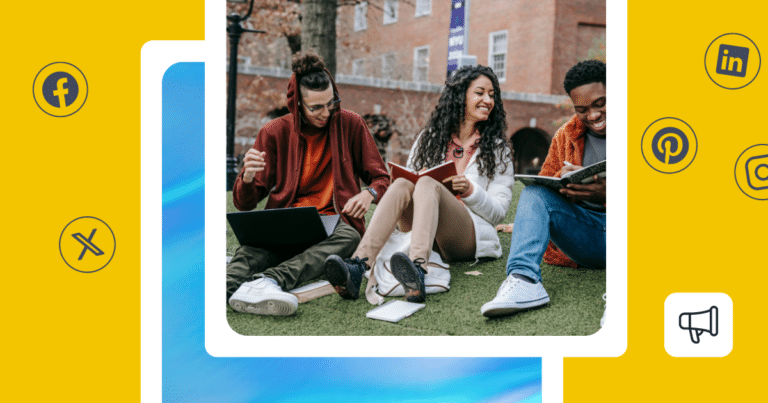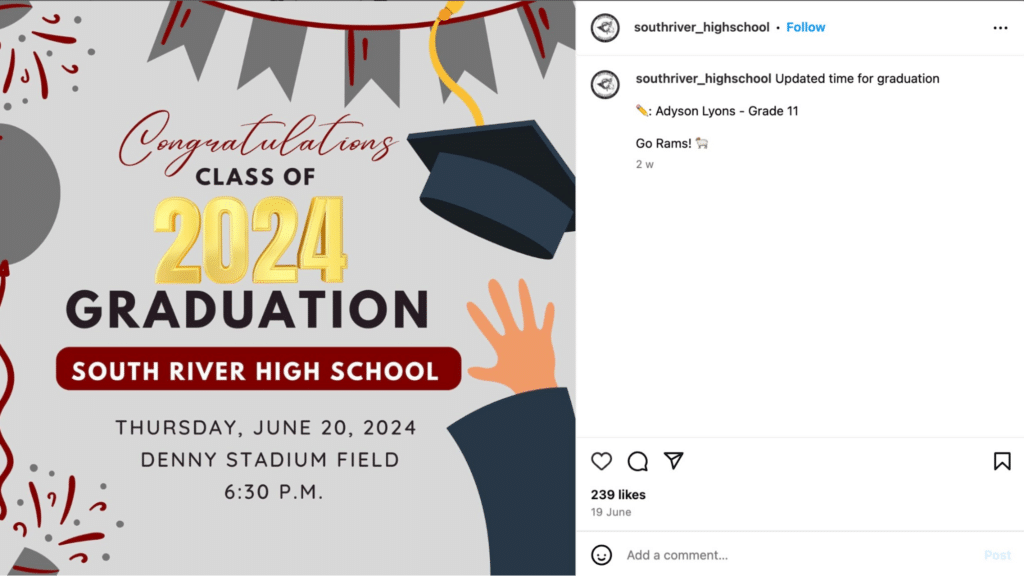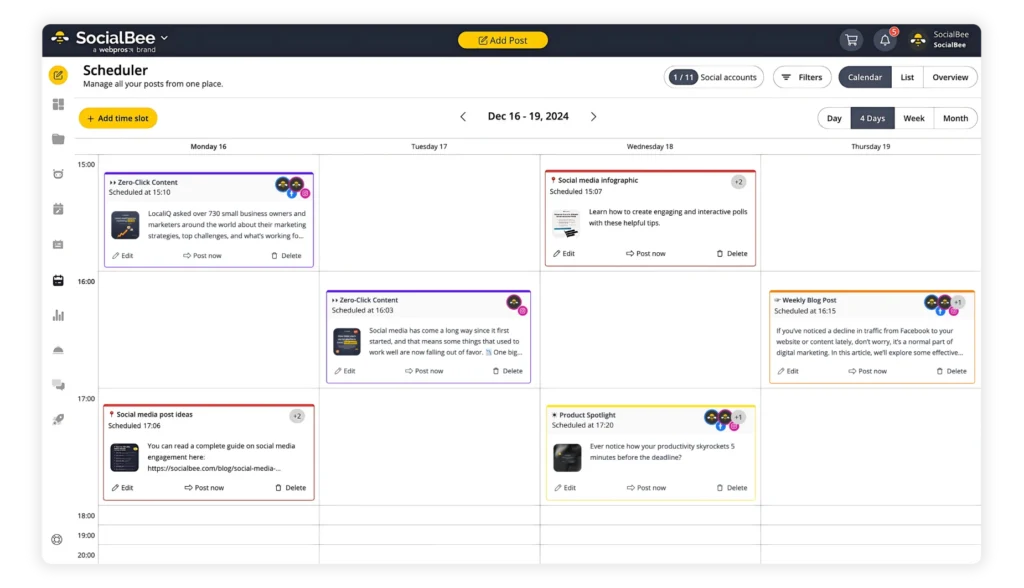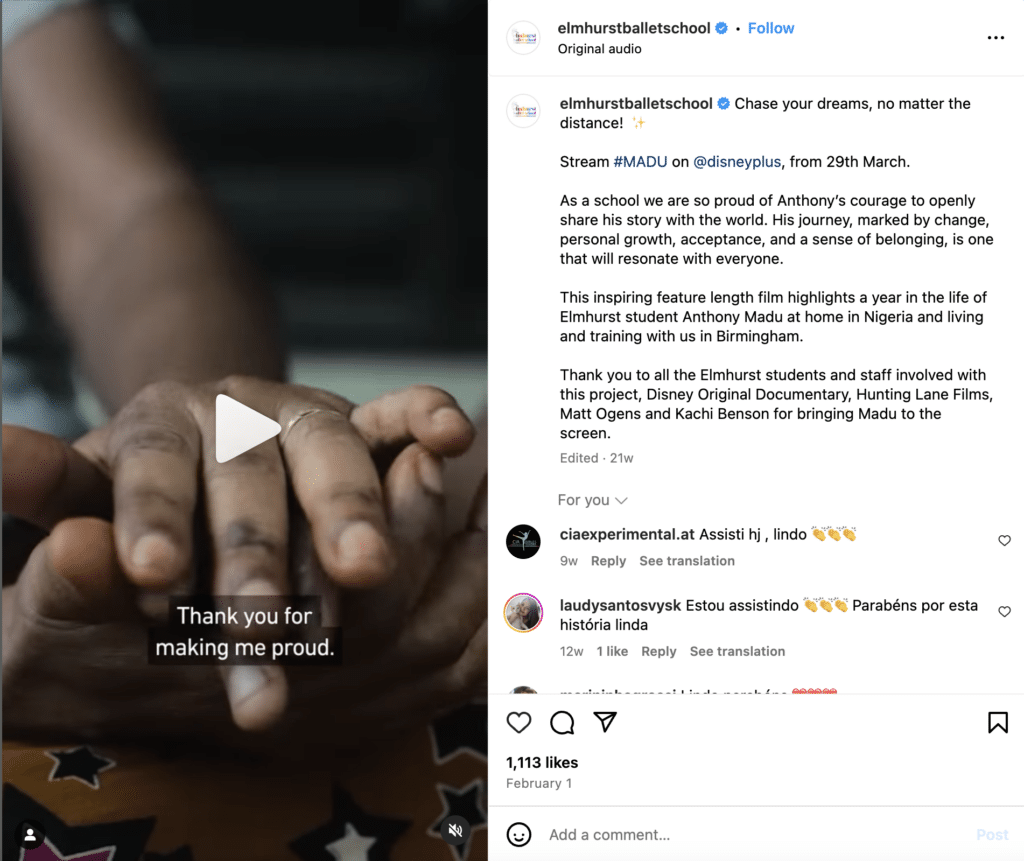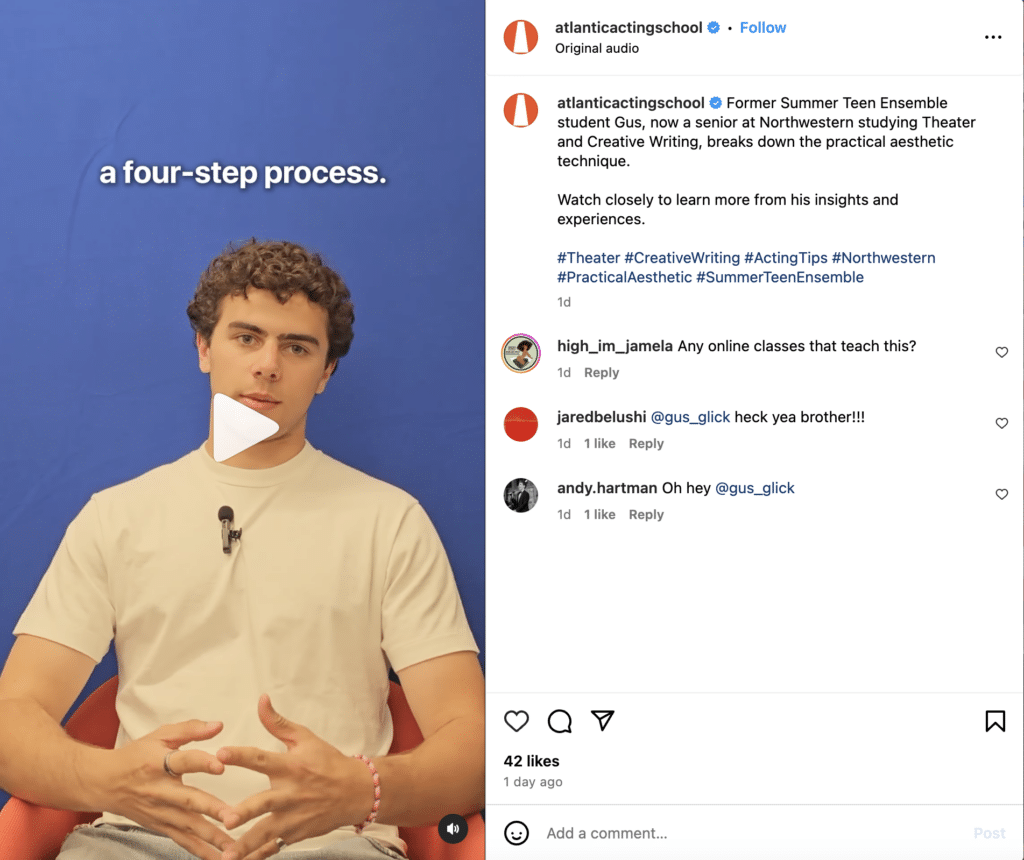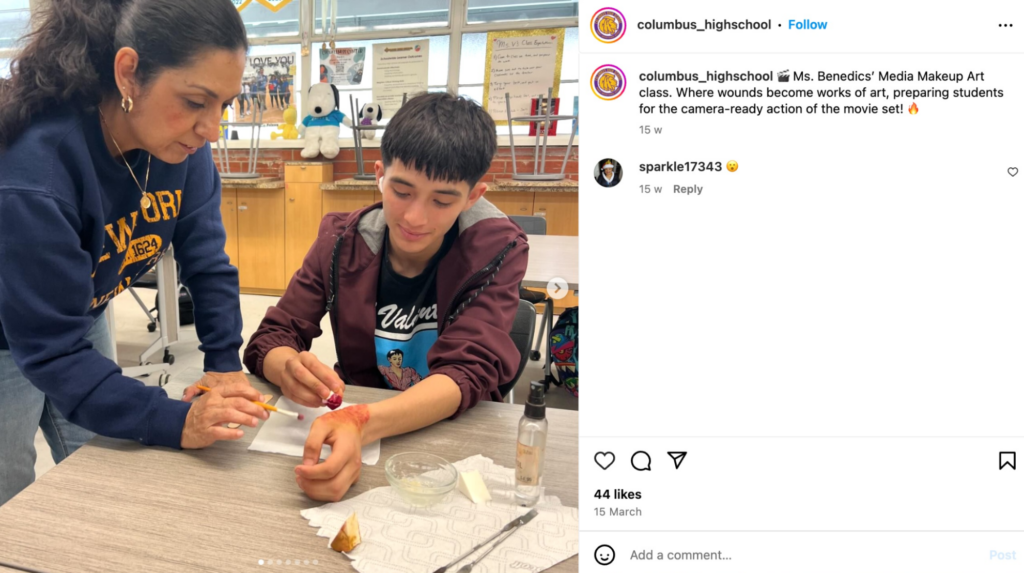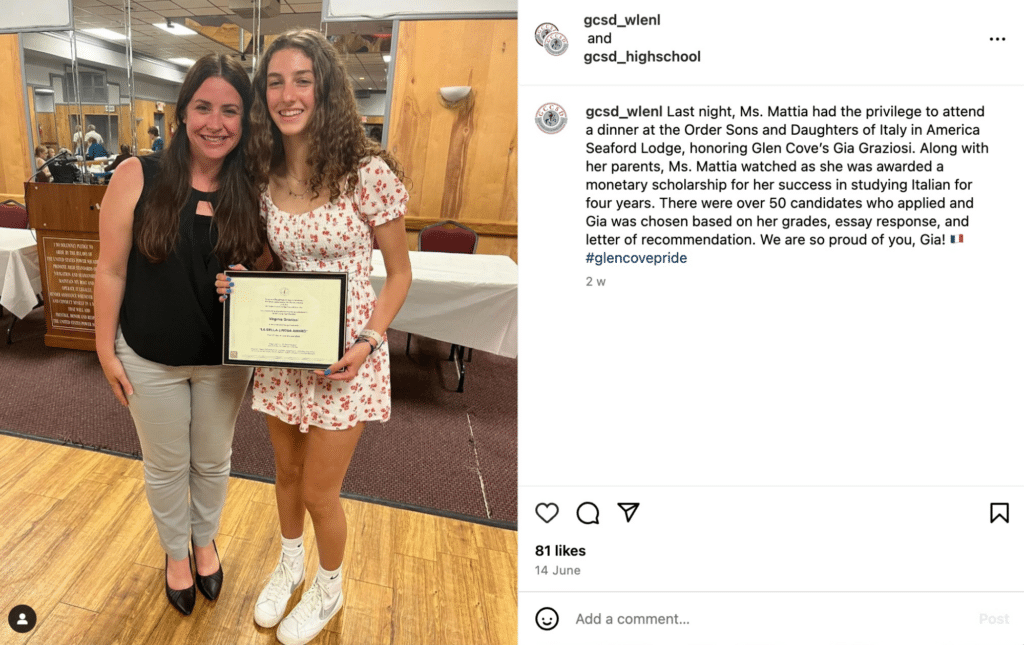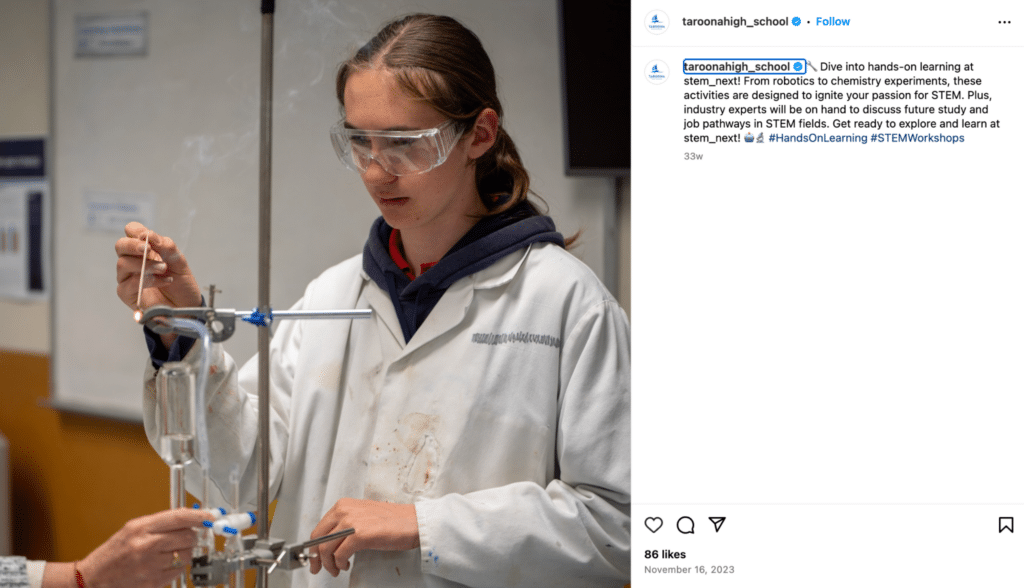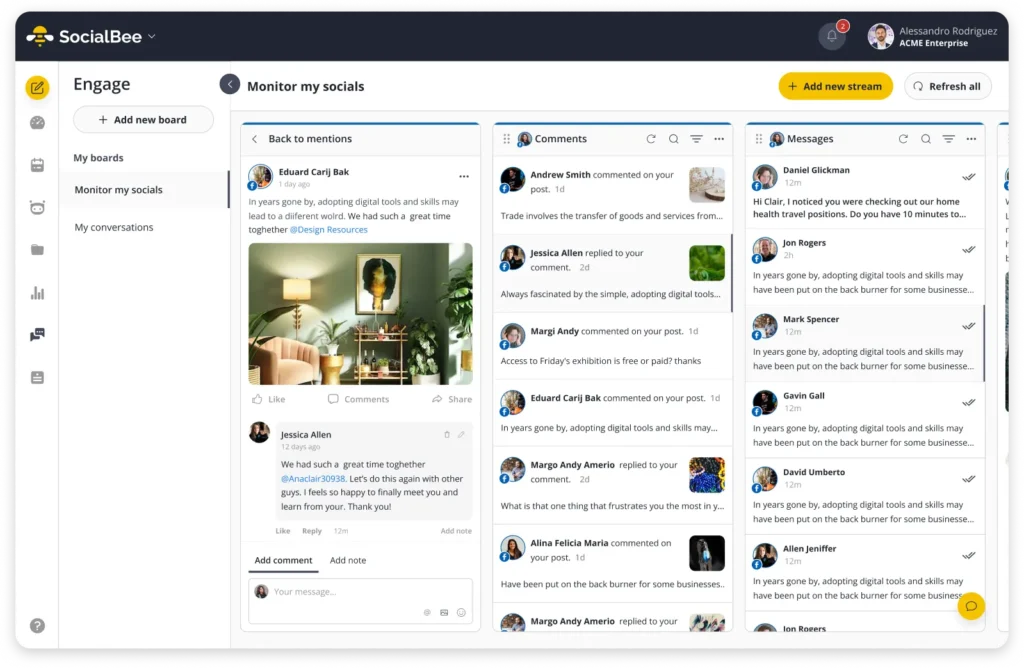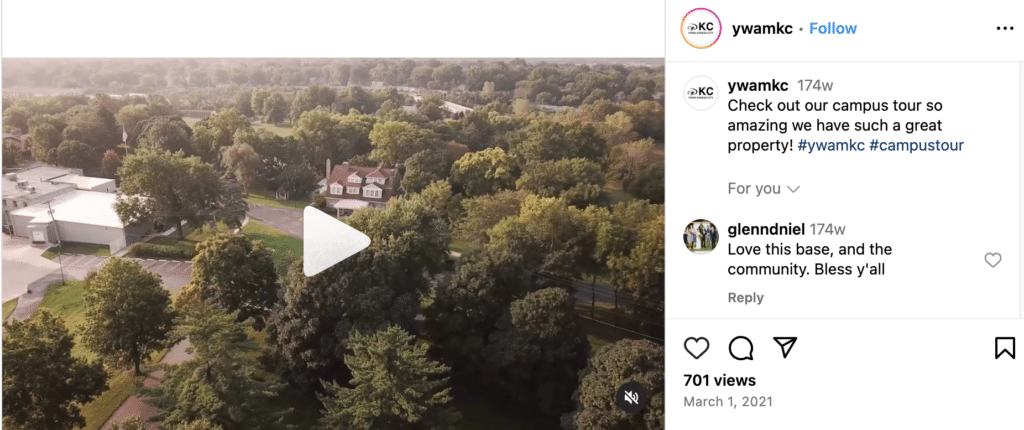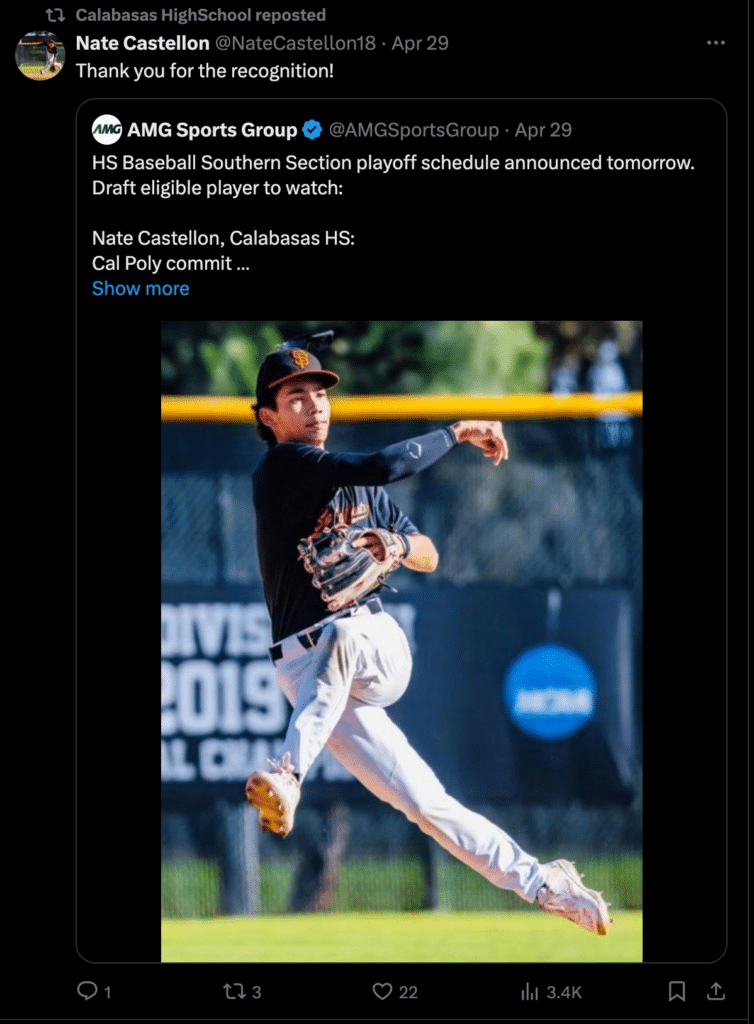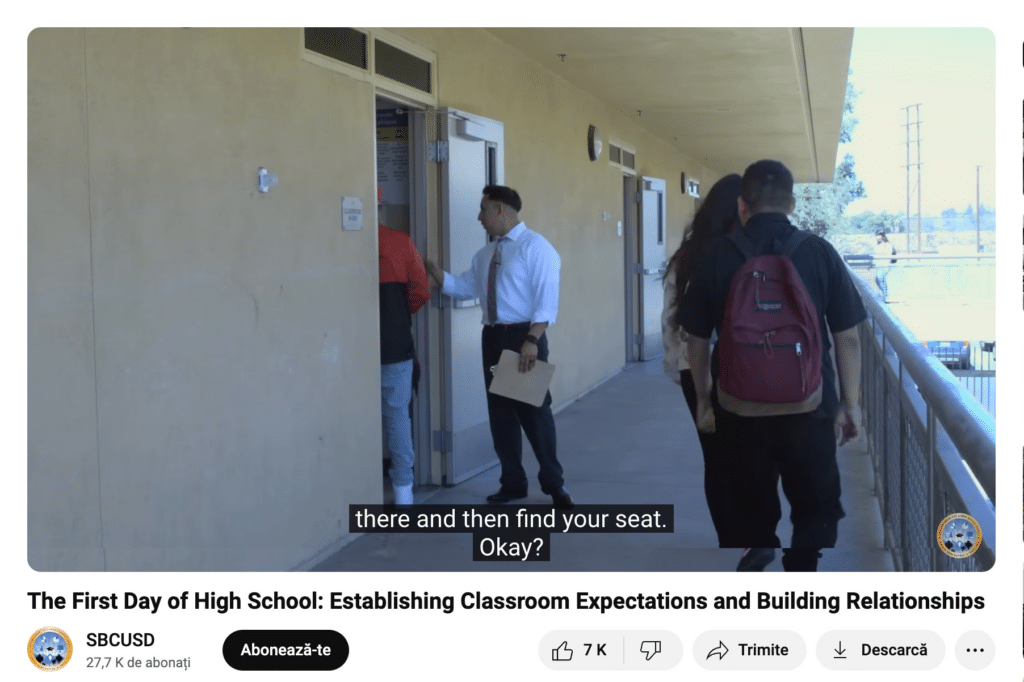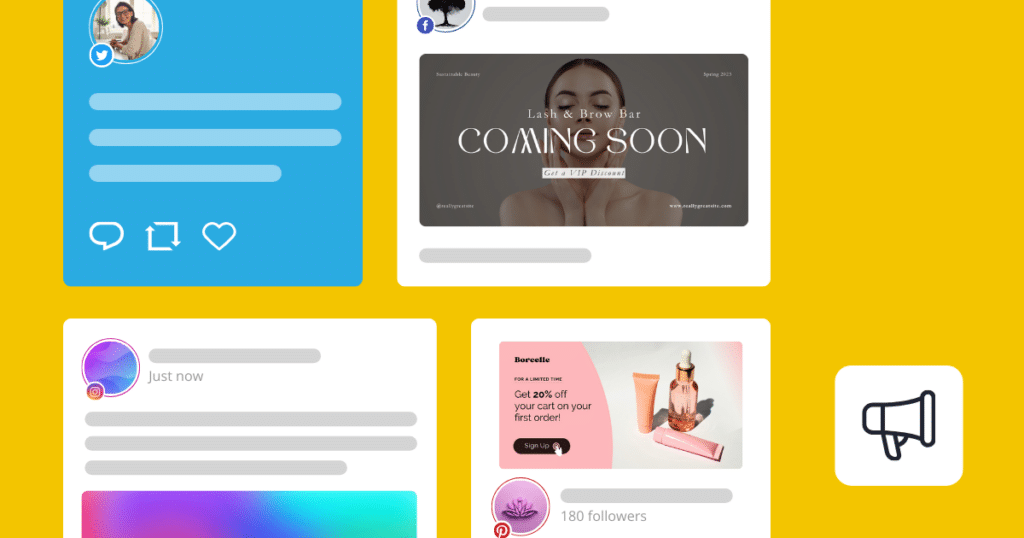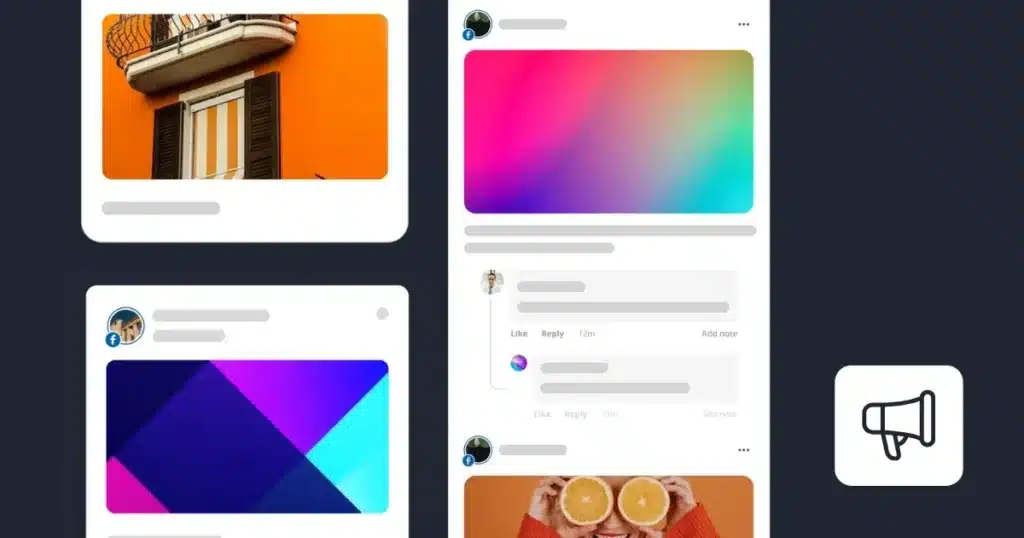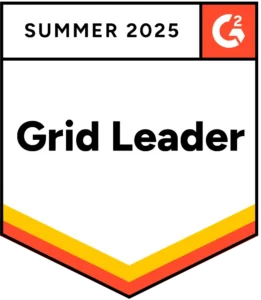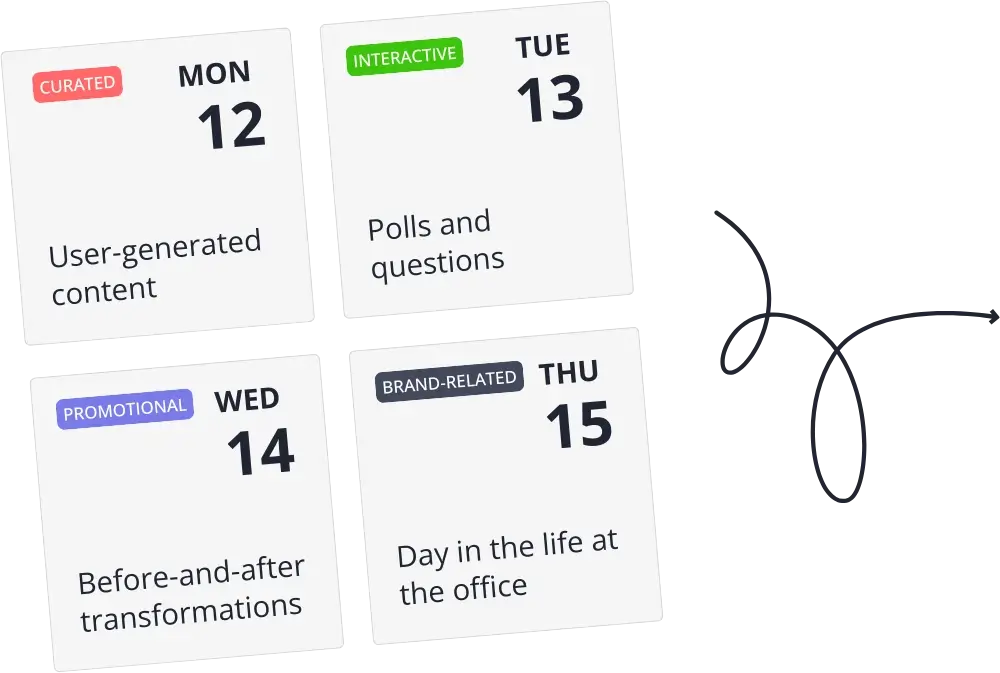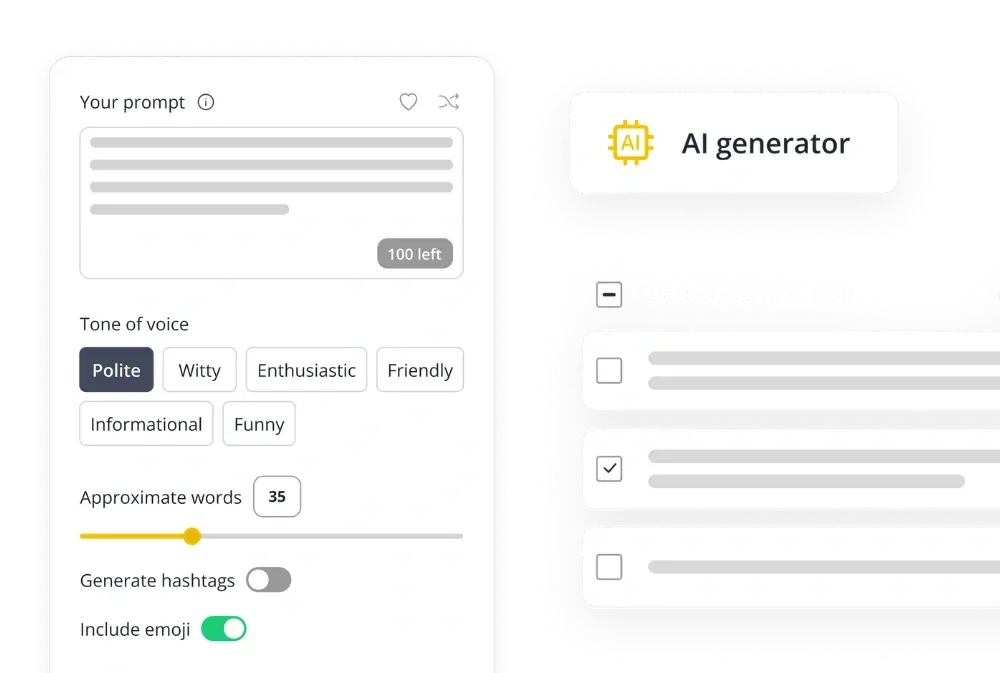Ever wondered how schools can effectively use social media to connect with students, parents, and the community?
With social media’s growing influence, schools can greatly benefit from a strong online presence. However, understanding all social media platforms and using them effectively can be challenging for many educators with no social media manager background.
This article will guide you through the process of using social media for schools, offering practical tips and strategies to enhance communication and engagement. From selecting the right platforms to creating engaging content and managing your accounts, you’ll find everything you need to build a successful social media presence.
Short Summary
- Social media is a powerful tool for keeping students and parents informed about school updates, events, and announcements. Regular posts ensure that everyone is up-to-date and engaged with school activities.
- Platforms like TikTok and Instagram make student learning fun and interactive. Sharing educational content and multimedia resources can increase student participation and make lessons more enjoyable.
- Highlighting student work and success stories on social media builds pride and showcases the positive aspects of your school. This can include sharing artwork, projects, and testimonials from alumni.
- Using social media for marketing helps attract prospective students. Promoting school events, unique programs, and success stories can make your school more appealing to potential students and their families.
- Lots of educational organizations use SocialBee to help streamline their social media management. Scheduling posts, tracking engagement, and monitoring interactions ensures a consistent and effective social media presence, saving time and resources for school administrators.
Why Is Social Media Marketing Important for Schools?
Social media marketing is becoming increasingly essential for schools, offering numerous benefits that enhance the educational experience and strengthen the school community. Even without having dedicated social media managers, educational institutions should focus on using the platforms to the fullest.
Here are the key reasons why social media marketing is important for schools:
- Enhancing student engagement: Social media helps engage students with fun and interactive content, making learning more enjoyable and increasing participation in school activities.
- Improving communication with parents: Social media provides a quick and easy way to keep parents informed about school updates, and events, improving communication and involvement.
- Showcasing school achievements and events: Schools can use social media to highlight achievements and share event highlights, building pride and a positive reputation within the community.
- Building a strong school community: Social media networks foster connections among students, parents, and staff, creating a sense of belonging and a supportive environment, while also pushing your school’s marketing messages forward.
- Improving digital literacy: Social media marketing offers an opportunity to teach students important digital literacy skills. Understanding the social media industry and the importance of digital footprints can prepare them for future academic and professional endeavors.
Supporting students’ mental health: Schools can use social networking sites to promote mental health resources and support services. Sharing information about counseling services, stress management tips, and positive messages can help address students’ mental health needs.
Using Social Media for Schools: Quick Tips
As it’s clear by now, schools can use social media to improve communication, engage students, and market their programs. This section provides practical tips for using social media effectively in both classroom settings and educational marketing.
A. Using Social Media in the Classroom
Integrating social media into the classroom can make learning more interactive and engaging.
Here are some practical ways to use social media to enhance classroom activities:
- Communicate class updates
- Facilitate group projects and discussions online
- Share educational resources and multimedia content
- Use social media for real-time classroom polls and quizzes
- Highlight student work on the school’s social media accounts
- Encourage students to create and share educational content
1. Communicate Class Updates
Teachers can use social media to post class updates, assignment reminders, and schedule changes. This helps ensure students stay informed and reduces the chances of missing important information.
Here’s how Southriver highschool has announced their updated time for the graduation:
This way, the high school students know when and where to be and can always refer back to Instagram or other platforms to check.
Using social media for updates also fosters a sense of community. Students can ask questions and share information quickly, helping everyone stay on the same page.
2. Facilitate Group Projects and Discussions Online
Social media platforms are great for managing group projects and discussions. Teachers can create online groups where students collaborate and share ideas.
This approach encourages participation from all students, including those who are shy. It also allows discussions to continue outside of class hours, providing more flexibility and depth.
3. Share Educational Resources and Multimedia Content
Teachers can post relevant articles, videos, and other educational materials on social media. This supplements classroom learning and provides students with additional resources.
Sharing multimedia content makes passive learning more engaging and caters to different learning styles. It also allows students to access materials at their own pace.
Pro Tip: Make sure posting on social media doesn’t take too much of your time. Use SocialBee to create, schedule, and share your content from one place.
With SocialBee, it’s super easy to organize your posts in folders dedicated to classroom updates, events, educational resources, and more. This way, you’ll design a mix of content that keeps everyone in the loop without feeling repetitive.
No more switching between platforms to post—manage your school’s entire social media strategy from SocialBee.
4. Use Social Media for Real-Time Classroom Polls and Quizzes
Social media platforms are excellent for conducting real-time polls and quizzes in the classroom.
Here are some ideas of polls and quizzes teachers can use:
- Opinion polls: Use Instagram Stories or Twitter to gauge student interest in potential project topics or upcoming events.
- Knowledge checks: Post weekly quizzes on Facebook or Instagram to review material covered in recent lessons.
- Current events discussions: Create polls on Twitter or Facebook about current events to spark discussions in the comments.
- Feedback surveys: Use social media polls to collect student feedback on teaching methods or class satisfaction.
- Fun fact quizzes: Engage students with fun quizzes on interesting facts related to the subject matter on platforms like Instagram.
Teachers from all education levels, from primary schools to universities, can use these tools to get instant feedback, measure student understanding, and make learning more interactive.
This not only keeps students engaged but also helps teachers identify areas where students may need more help. Furthermore, for a more comprehensive and tailored learning experience, schools can also explore dedicated elearning app development services to create custom platforms that integrate seamlessly with social media and offer a wider range of interactive features.
School districts can incorporate polls and quizzes into their social media strategies to better connect with their target audience. Sharing poll results or highlights on the school website or social media accounts can involve community members and showcase the school’s innovative teaching methods.
Additionally, use polls to carry out mini-studies and gather insights. Social media quizzes can be used to engage students and test their knowledge interactively, outside of school hours.
5. Highlight Student Work and Achievements on the School’s Social Media Accounts
Showcasing student work on the school’s social media channels is a great way to recognize and celebrate their achievements. This could include sharing prizes, artwork, projects, presentations, or even inspiring stories.
Highlighting student work boosts their confidence and allows parents and online community members to see the great work being done in the school.
6. Encourage Students to Create and Share Educational Content
Encouraging students to create and share their own educational content can enhance learning. This could include projects, videos, or articles on topics they’re studying.
You can also feature students explaining concepts they learned attending your classes, similar to how Atlantic Acting School did in this example:
Creating content helps students develop critical thinking and communication skills. It also makes learning more interactive and enjoyable.
You can also focus on creating challenges and contests on social media, urging students to share resources and tips they use to study. This makes learning more interactive and enjoyable, helping develop critical thinking and communication skills.
B. Using Social Media for Education Marketing
School social media is also a powerful tool for marketing educational programs and reaching prospective students.
Here are some strategies for using social media in education marketing:
- Promote school events to prospective students
- Share success stories and testimonials from students and alumni
- Use social media advertising to reach prospective students
- Highlight unique academic programs on the school’s social media accounts
- Engage with prospective students through interactive content
- Provide virtual tours and open houses via social media
1. Promote School Events to Prospective Students
Using social media to promote school events can attract prospective students. Schools can post about open houses, sports events, and performances on platforms like Facebook and Instagram.
Sharing photos and videos from these events gives a real sense of the school’s energy and culture.
Take a look at this make-up art class organized by Columbus highschool:
Encouraging current students and parents to share these posts helps reach a wider audience. Regular updates on social media links and easy-to-find event details can further boost engagement.
2. Share Success Stories and Testimonials from Students and Alumni
Highlighting student and alumni success stories on social media can boost a school’s image. Posting about current or former students’ achievements shows the lasting impact of the school’s education. These stories can be shared through videos, quotes, and interviews
Here’s such an example from Glen Cove highschool:
Regular updates keep the content fresh and engaging. Testimonials and success stories inspire other current students and show prospective students the potential paths they can follow.
3. Use Social Media Advertising to Reach Prospective Students
Social media ads can effectively target prospective students based on various filters, such as age, location, interests, educational background, and online behavior.
Schools can create ads on Facebook and Instagram to reach these specific groups. These ads can highlight unique educational programs, extracurricular activities, campus life and even practical information like loan disbursement timelines to help prospective students plan their finances.
Tracking ad performance helps ensure they are reaching the right audience. Adjusting strategies based on engagement and feedback can improve effectiveness.
4. Highlight Unique Academic Programs on the School’s Social Media Accounts
Presenting unique academic programs on social media can attract students interested in those areas.
Schools can create social media posts about:
- Specialized courses
- Innovative projects
- Student achievements
Using photos, videos, and infographics can make the content more engaging.
Featuring these programs prominently on social media and the school website keeps the audience informed. Regular updates show an ongoing commitment to academic excellence.
5. Engage with Prospective Students through Interactive Content
Interactive content like Q&A sessions, live streams, and polls can engage prospective students. These interactions allow students to ask questions and get a feel for the school community. It’s a direct way to address their interests and concerns.
Scheduling these interactive sessions around important dates, like application deadlines, can maximize participation. Regular engagement helps build a connection with prospective students.
Pro Tip: Using a tool like SocialBee can greatly improve engagement efforts. SocialBee allows schools to track comments and DMs and monitor mentions.
This helps school leaders manage social media efficiently, ensuring timely responses and keeping the audience engaged. Regular engagement helps build a strong connection with prospective students.
Track your comments, DMs, and mentions of your school’s community with SocialBee!
6. Provide Virtual Tours and Open Houses via Social Media
Virtual tours and open houses on social media can give prospective students a feel for the school without needing to visit in person. Schools can create videos and live tours showing the campus and facilities.
Promoting these virtual events ahead of time and making access easy ensures they reach a wide audience. Highlighting key aspects of the school during these tours can leave a lasting impression.
Social Media in Education: Best Social Media Platforms to Use
Using the right social media platforms can greatly enhance communication, engagement, and learning within educational institutions.
Here are the major social media platforms to use as a school district or institution:
- Facebook: best for community building
- Instagram: best for visual content
- Threads: best for entertaining & interactive content
- X (Twitter): best for quick updates
- LinkedIn: best for alumni connections
- YouTube: best for educational videos
- TikTok: best for creative engagement
1. Facebook: Building Community
Facebook is ideal for building a community among students, parents, and staff. Schools can create a Facebook page to share updates, events, and photos, which helps foster a sense of involvement and connection. For example, posting about upcoming PTA meetings, school plays, or sports events keeps everyone informed and engaged.
Schools should regularly update their Facebook page with engaging content, including: weekly newsletters, student spotlights, and interactive polls. Encouraging parents and students to like, comment, and share posts can further extend the reach and impact of your content.
Additionally, creating Facebook groups for specific classes, clubs, or grade levels can facilitate more focused social media communication.
2. Instagram: Visual Content
Instagram is perfect for sharing visual content such as photos and videos of school events, student achievements, and daily activities.
Schools can use Instagram Stories and Reels to engage with students and parents in real-time. For instance, a behind-the-scenes look at a school play or a day in the life of a student can be very quite interesting to follow.
If you are a highschool, you can also present an interview with college students who previously graduated from your institution, fostering alumni relations and providing your current students with a deeper understanding on future prospects.
To maximize engagement, schools should post regularly and use relevant hashtags to reach a wider audience. Highlighting special projects, art exhibitions, and sports victories can showcase the vibrancy and fun of student life.
3. Threads: Entertaining & Interactive Content
Threads is popular among a younger audience who appreciate quick and entertaining content. Schools can leverage this by posting engaging videos of school events, light-hearted moments from campus life and important updates. Humor, when used appropriately, can make these posts more appealing and relatable.
Incorporating interactive elements like polls or quizzes about school topics helps increase engagement. By maintaining a balance between fun and informative content, schools can effectively use Threads to keep students informed and connected in a way that resonates with their everyday social media experiences.
4. X (Twitter): Quick Updates
X, formerly known as Twitter, is great for quick updates and announcements. Schools can use it to share news, event reminders, and real-time updates. For instance, tweeting about a last-minute school closure or an upcoming deadline can quickly reach the community.
Engaging with followers by retweeting and replying to comments can also foster a more interactive and responsive school environment.
Take a look at Calabasas highschool reposting their students’ tweets:
To be effective, schools should tweet regularly and keep messages concise. Using hashtags related to the school or event can increase visibility.
5. LinkedIn: Alumni Connections
Having a LinkedIn page is essential for maintaining connections with alumni. Schools can use it to showcase alumni achievements, share professional development opportunities, and keep the community informed about school news and events.
For example, posting updates about alumni who have achieved notable career milestones can inspire current students.
Schools should create a professional page or group and update it regularly with news and achievements. Encouraging alumni to connect with the school and each other can build a strong professional network. Sharing job postings and alumni-provided career advice can also add value for alumni and current students.
6. YouTube: Educational Videos
YouTube is a powerful platform for sharing educational videos. Schools can create channels to post lectures, tutorials, and event highlights.
For example, recording a science experiment demonstration or a school concert can provide valuable content for students and parents.
Here’s such an example of educational video:
You should regularly upload high-quality videos on your school’s social media profiles and organize them into playlists for easy navigation.
7. TikTok: Creative Engagement
TikTok is great for sharing fun and educational videos. Schools can use it to connect with students in a casual and entertaining way. For example, short videos explaining a math concept or showcasing a school event can be both informative and engaging.
To leverage TikTok, schools should post regularly and participate in trending challenges related to education. Encouraging students to create and share their own educational content can also boost engagement. Using popular hashtags and music can help videos reach a broader audience.
Frequently Asked Questions
Schools can use social media to share announcements, highlight student achievements, and promote events. It helps improve communication with parents, providing updates and important information quickly.
Teachers can use it to share educational resources and support students outside of the classroom. Having a school’s social media strategy also helps build a sense of community by connecting students, parents, and staff, making the school environment more inclusive and engaging.
Teachers most commonly use Facebook as their school social media platform of choice. It allows them to create private groups, share resources, and communicate easily with parents and students.
Its familiarity and versatility make it a go-to tool for staying connected and engaged with the school community.
High school and middle school students most commonly use TikTok and Instagram for their engaging videos and visual content. University students also use Instagram and TikTok, but they rely more on X (Twitter) and LinkedIn for networking.
School districts targeting these audiences should focus on these platforms to connect with current students effectively.
Start Using Social Media for Education!
Using social media for marketing and communication allows schools to highlight their unique programs, share success stories, and provide timely updates.
Tools like SocialBee can help streamline these efforts by allowing schools to plan and schedule posts, track engagement, and manage interactions efficiently. This ensures that the school’s social media presence remains active and responsive, building stronger connections with the community.
To take full advantage of social media for your school, start your 14-day SocialBee trial today and see how it can transform your school’s online engagement!

